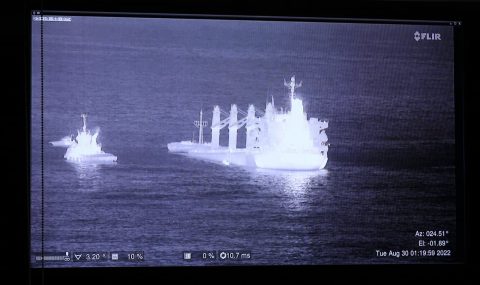
Bulker OS 35 beached off Gibraltar after colliding with LNG carrier
Photo source: Government of Gibraltar
A bulk carrier, OS 35, loaded with steel rebars collided with the Adam LNG carrier while manoeuvring to exit the Bay, the Gibraltar Port Authority said.
Want to read more?
You have read all of your free premium articles for this month. Please become a subscriber to keep reading.
Subscribe now!
Take advantage of our exclusive offer to get full access to all premium content.




